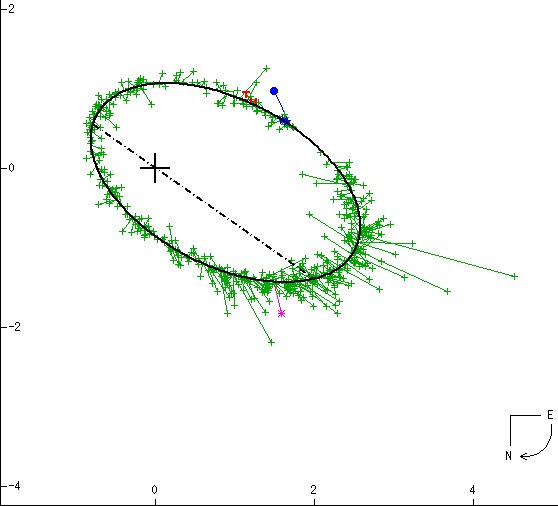
 |
The Sunlike star Iota Leonis B orbits warmer, more massive, Iota Leo A (at the cross) every 186 years at an average separation of 45 Astronomical Units. They are now getting farther apart. In reality they both orbit a common point between them. The scale is in seconds of arc. From the Sixth Catalog of Orbits of Visual Binary Stars , W. I. Hartkopf and B. D. Mason, US Naval Observatory Double Star Catalog, 2006. |